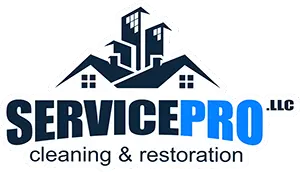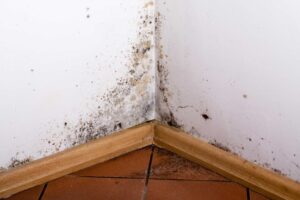Understanding how to navigate the complexities of repair and insurance claims can make a big difference in your recovery process. Many homeowners face challenges when evaluating damage, knowing when to call for help, and preventing future issues. This guide will address your most pressing questions and provide clarity on the steps you need to take.
Key Takeaways
- Assess exterior and interior damage thoroughly, documenting findings with photos for insurance claims.
- Call professionals for significant structural damage, hazardous situations, or extensive roof leaks.
- Create a repair timeline prioritizing safety needs and securing necessary permits for repairs.
- Review your insurance policy to understand coverage and gather documentation for claims.
- Prepare an emergency supplies checklist to address immediate needs following a storm.
What Types of Storm Damage Can Occur?
When storms hit, what kinds of damage can you expect? One significant type of damage is wind damage. Strong winds can uproot trees, break branches, and even lift roofs off homes. You might find shingles scattered across your yard or siding ripped away, exposing your home to further elements.
Another common issue is hail damage. Hailstones can pummel your roof, siding, and windows, causing dents and cracks. If you see divots on your roof or dings on your vehicles, hail might be the culprit.
Both wind and hail damage can lead to leaks and structural issues, increasing repair costs if not addressed promptly. It’s crucial to assess the extent of the damage to determine the best course of action for repairs.
Understanding these potential damages helps you prepare and respond effectively, ensuring your home remains a safe haven during future storms.
How Do I Assess the Damage After a Storm?
How can you effectively evaluate the damage after a storm?
Begin by examining your property’s exterior. Look for visible signs of storm impact, such as missing shingles, broken windows, or damaged siding. Make a checklist to document each issue you find, as this will aid in your damage evaluation.
Next, inspect your yard and surrounding areas for fallen trees, debris, or flooding. Pay attention to any structural changes, like cracks in the foundation or walls.
Once you’ve completed your exterior inspection, turn your attention to the interior. Check for water stains, mold, or unusual odors, indicating potential leaks.
Take photos of all damages for insurance purposes, as these will support your claims later. By systematically evaluating the damage, you’ll have a clearer understanding of the repairs needed and also take the necessary steps to ensure your home returns to its safe, comfortable state.
When Should I Call a Professional for Repairs?
Determining the right moment to call in a professional for storm damage repairs can greatly impact the safety and integrity of your home. If you encounter significant structural damage, standing water, or hazardous debris, it’s vital to contact emergency services immediately. Additionally, if the repair timelines exceed your capability or if you’re unsure about the extent of the damage, a professional assessment is imperative.
| Damage Type | Call a Professional | DIY Possible |
|---|---|---|
| Structural Damage | Yes | No |
| Minor Roof Leaks | Yes (if extensive) | Yes (if small) |
| Fallen Trees/Debris | Yes | No |
It’s important to prioritize safety. When in doubt, reach out for help. Timely intervention ensures your home is secure and prevents further damage and costly repairs.
What Steps Are Involved in the Repair Process?
As you initiate the repair process following storm damage, understanding the necessary steps can streamline your efforts and ensure a detailed restoration.
Start with a thorough damage assessment to identify all affected areas. Document the damage with photos and notes, which will be useful for insurance claims.
Next, create a repair timeline, prioritizing immediate needs like structural integrity and safety.
Once you’ve assessed the damage, you can begin contacting professionals if needed, or gather materials for DIY repairs. Make certain you have the right permits if required, and communicate with your insurance company regarding coverage and claims.
After securing materials and professional help, move forward with repairs, addressing the most critical issues first.
Finally, conduct a final inspection to make sure everything meets safety standards and is up to code. This organized approach helps ensure you restore your property effectively and efficiently.
How Long Does Storm Damage Repair Typically Take?
When evaluating the timeline for storm damage repair, several factors come into play. Each situation is unique, and understanding these project factors can help you gauge repair timelines more accurately. Typically, the extent of damage, the type of repairs needed, and your contractor’s availability can greatly affect how long the repairs will take.
Here’s a quick overview of common storm damage repairs and their estimated timelines:
| Repair Type | Estimated Timeframe | Project Factors |
|---|---|---|
| Roof Repairs | 1-3 days | Roof size, material availability |
| Siding Replacement | 3-7 days | Type of siding, weather conditions |
| Water Damage Repair | 1-2 weeks | Severity of damage, drying time |
| Tree Removal | 1 day | Tree size, location |
| Interior Repairs | 1-4 weeks | Scope of work, access |
Will My Insurance Cover Storm Damage Repairs?
When evaluating whether your insurance will cover storm damage repairs, it’s essential to understand the types of coverage available in your policy.
Different policies may have varying stipulations regarding what damages are covered and the conditions for filing a claim.
Knowing the claims process can also help ensure you take the necessary steps to secure your coverage efficiently.
Coverage Types Explained
Understanding the types of coverage your insurance policy offers is vital for determining whether you’ll receive financial support for storm damage repairs.
Generally, homeowners’ insurance includes coverage options like dwelling, personal property, and liability, each addressing different aspects of your home. Dwelling coverage typically protects the structure, while personal property coverage safeguards your belongings.
However, policy limitations can affect your claims. For instance, some policies may exclude specific types of storm damage, such as flooding or wind damage, unless additional coverage is purchased.
It’s important to review your policy thoroughly and consult your agent to clarify coverage options and limitations. This way, you can make informed decisions and ensure you’re adequately protected when disaster strikes.
Filing Claims Process
How do you navigate the claims process after storm damage? Understanding this process can ease your worries and help you feel more in control. Here are some key steps to take into account:
Gather your claim documentation, including photos and repair estimates.
Contact your insurance company to report the damage and start your claim.
Keep track of the claim timeline, noting any communication and deadlines.
Insurance coverage for storm damage varies, so it’s essential to know your policy details.
After filing, your insurer will review your claim and may send an adjuster to assess the damage.
Being organized and proactive can greatly expedite your claim, ensuring you get the support you need during this challenging time.
What Are Common Signs of Mold After a Flood?
Have you noticed unusual odors or discoloration in your home after a flood? These could be early signs of mold growth. Mold thrives in damp environments, so if your home experiences flooding, it’s essential to be vigilant.
Look for dark spots on walls, ceilings, or floors, as these can indicate mold colonies. You might also find mold in hidden areas like behind cabinets or within HVAC systems, making mold detection important in flood cleanup.
Pay attention to musty smells, which often signal mold presence. If you see condensation on windows or walls, that moisture can also foster mold growth.
Additionally, physical symptoms like sneezing, coughing, or skin irritation may arise, indicating that mold spores are affecting your health. To safeguard your home and well-being, act quickly if you suspect mold, as prompt remediation is imperative in preventing further damage.
How Can I Prevent Future Storm Damage?
To prevent future storm damage, you’ll need to prioritize regular maintenance checks around your property.
Inspect your roof, gutters, and drainage systems to ensure they’re in good condition and functioning properly.
Additionally, securing outdoor items like furniture and decorations can minimize potential hazards during severe weather events.
Regular Maintenance Checks
Regular maintenance checks play an essential role in preventing future storm damage to your property.
By committing to preventative maintenance and routine inspections, you can identify potential vulnerabilities before they escalate.
Here are some key areas to focus on:
- Roof condition: Inspect for missing shingles or leaks.
- Gutters and downspouts: Verify they’re clear and functioning properly.
- Windows and doors: Check for gaps or signs of wear.
Secure Outdoor Items
After ensuring your property is well-maintained, securing outdoor items is an essential step in minimizing potential storm damage.
Proper storm preparedness involves identifying and safeguarding items that could become projectiles during severe weather. Store lightweight furniture, garden tools, and decorations in a designated outdoor storage area, such as a shed or garage.
For larger items, use straps or anchors to secure them firmly to the ground. Consider investing in weather-resistant storage solutions to protect your belongings year-round.
What Should I Do Immediately After a Storm?
What steps should you take immediately following a storm? Your safety and well-being are the top priorities. First, assess your surroundings and verify there are no immediate dangers.
Here are some essential actions to take into account:
- Check for gas leaks and downed power lines.
- Document any damage with photos for insurance purposes.
- Stay informed through local news or weather updates.
If you’ve followed storm preparedness tips, you should have an emergency supplies checklist handy. This will help you gather important items like flashlights, batteries, and first aid supplies.
Next, reach out to neighbors to verify everyone is safe, fostering a sense of community support.
Don’t rush into repairs; take the time to evaluate what needs fixing and consult professionals when necessary. Your immediate actions can greatly influence your recovery process, so prioritize safety and thoughtful planning as you navigate the aftermath of the storm.
How Can I Choose the Right Storm Damage Repair Company?
Once you’ve secured your safety and documented any damage, finding the right storm damage repair company becomes a priority.
Start by researching local companies and checking their customer reviews. This feedback can provide insight into their reliability and quality of work. Look for companies with a solid track record and positive testimonials from homeowners like you.
Next, request cost estimates from a few different providers. This will help you gauge the market rate and compare services offered.
Be wary of unusually low estimates, as they may indicate subpar work or hidden costs later on.
Finally, verify the company is licensed and insured, which protects you from liability during repairs.
Summary
Maneuvering storm damage repairs can feel like steering a ship through rough waters, but with the right knowledge and preparation, you can safely reach calmer shores. By understanding the types of damage, evaluating the situation promptly, and knowing when to call in professionals, you can effectively manage the repair process. Remember, staying informed about your insurance coverage and maintaining your home can help you weather future storms with confidence.




